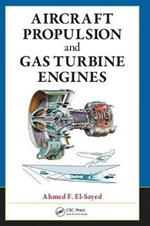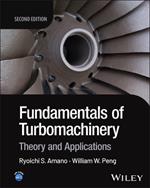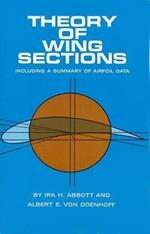IBS.it, l'altro eCommerce
L’articolo è stato aggiunto alla lista dei desideri
Offerte
Novità
Disponibilità
Prezzo (€)
Autori
Vedi tutti
Mostra meno
Editori e marche
Vedi tutti
Mostra meno
Collane e linee
Vedi tutti
Mostra meno
Media recensioni
Venditore
Vedi tutti
Mostra meno
Science, Computer & Technology Mechanical (5000)
Applied Groundwater Modeling: Simulation of Flow and Advective Transport
Venditore: IBS
Elsevier Science Publishing Co Inc,
2015
Libri in Inglese | Science, Computer & Technology
Disp. immediata
-5%
98,74 €
93,80 €
Measurements for Decision Making: Measurements and Basic Statistics
Venditore: IBS
(altre 1 offerte)
-25%
54,20 €
40,65 €
Finite Element Simulations with ANSYS Workbench 2023: Theory, Applications, Case Studies
Venditore: IBS
-5%
87,49 €
83,12 €
Aircraft Propulsion and Gas Turbine Engines
Venditore: Libreria sottomarina
(altre 1 offerte)
78,00 €
Finite Element Modelling of Composite Materials and Structures
Venditore: Biblioteca di Babele
(altre 1 offerte)
Elsevier Science & Technology,
2000
Libri in Inglese | Science, Computer & Technology
Prodotto usato
36,00 €
Fundamentals of Turbomachinery: Theory and Applications
Venditore: IBS
John Wiley & Sons Inc,
2025
Libri in Inglese | Science, Computer & Technology
Disp. in 5 gg lavorativi
-5%
143,75 €
136,56 €
Perry's Chemical Engineers' Handbook
Venditore: IBS
McGraw-Hill Education - Europe,
2018
Libri in Inglese | Science, Computer & Technology
Disp. in 5 gg lavorativi
-5%
240,00 €
228,00 €
Professionelles Produktmanagement: Der Prozessorientierte Ansatz, Rahmenbedingungen Und Strategien
Venditore: HAMELYN
(altre 1 offerte)
12,65 €
How to Boil an Egg: A Fresh Look at Sustainable Energy for Everyone
Venditore: HAMELYN
(altre 1 offerte)
12,99 €
Mechanics of Solids and Structures
Venditore: IBS
Taylor & Francis Ltd,
2025
Libri in Inglese | Science, Computer & Technology
Disp. in 5 gg lavorativi
-5%
175,00 €
166,25 €
Up and Running with AutoCAD 2023: 2D and 3D Drawing, Design and Modeling
Venditore: IBS
(altre 5 offerte)
Elsevier Science & Technology,
2022
Libri in Inglese | Art, Architecture & Photography
Disp. in 5 gg lavorativi
-5%
86,19 €
81,88 €
Self-Checking and Fault-Tolerant Digital Design
Venditore: HAMELYN
(altre 1 offerte)
Elsevier Science & Technology,
2000
Libri in Inglese | Science, Computer & Technology
Prodotto usato
33,64 €
Formula 1 Cars: The Greatest F1 Cars from 1950 to the Present Day
Venditore: IBS
HarperCollins Publishers,
2025
Libri in Inglese | Science, Computer & Technology
Disp. in 5 gg lavorativi
-5%
37,50 €
35,62 €
Internal Combustion Engine Fundamentals 2E
Venditore: IBS
McGraw-Hill Education,
2018
Libri in Inglese | Science, Computer & Technology
Disp. in 5 gg lavorativi
-5%
164,80 €
156,56 €
Theory of Wing Sections
Venditore: IBS
Dover Publications Inc.,
2000
Libri in Inglese | Science, Computer & Technology
Disp. in 5 gg lavorativi
-5%
26,24 €
24,93 €
Modern Electric, Hybrid Electric, and Fuel Cell Vehicles
Venditore: IBS
Taylor & Francis Ltd,
2018
Libri in Inglese | Science, Computer & Technology
Disp. in 5 gg lavorativi
-5%
68,75 €
65,31 €
Mastering Quantum Mechanics: Essentials, Theory, and Applications
Venditore: IBS
-5%
131,25 €
124,69 €
Discrete-Time Signal Processing: Pearson New International Edition
Venditore: IBS
Pearson Education Limited,
2013
Libri in Inglese | Science, Computer & Technology
Disp. in 5 gg lavorativi
-5%
107,49 €
102,12 €
Fundamentals of Modern Manufacturing: Materials, Processes and Systems, International Adaptation
Venditore: IBS
John Wiley & Sons Inc,
2021
Libri in Inglese | Science, Computer & Technology
Disp. in 5 gg lavorativi
-5%
67,49 €
64,12 €
Informazioni sull’ordinamento
Vengono mostrati per primi i prodotti che rispondono a questi criteri: rilevanza rispetto alla ricerca, dati di venduto, disponibilità, data di pubblicazione, tipologia di prodotto, personalizzazione ad eccezione delle sponsorizzazioni.
























